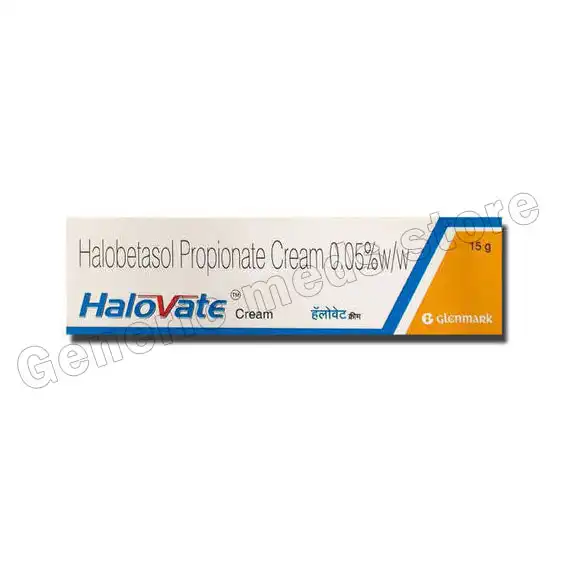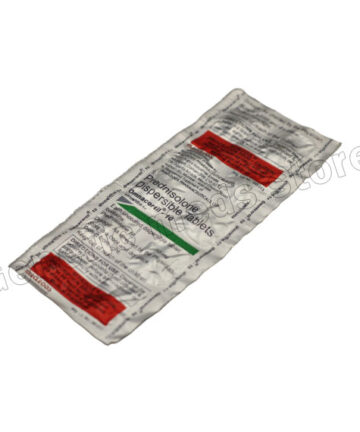What Is Halovate Cream?
Halovate Cream is a topical medication primarily used to treat various inflammatory and pruritic (itchy) skin conditions. It belongs to a class of medicines known as topical corticosteroids, specifically classified as an ultra-high potency steroid (Class in the US system).
Active Ingredient: Halobetasol Propionate (usually 0.05% w/w)
Drug Class: Ultra-High Potency Topical Corticosteroid (Steroid)
Uses of Halovate Cream
Halovate Cream is a prescription-only medicine used for the short-term treatment of responsive Skin infections and pruritic manifestations of:
Plaque Psoriasis: A chronic autoimmune disease characterized by thick, red, scaly patches on the skin. Halovate helps manage the associated itching, redness, and scaling.
Eczema (Atopic Dermatitis): It treats the symptoms of flare-ups, such as intense itching, dryness, and inflammation.
Halovate Cream is generally reserved for more severe or resistant cases due to its high potency and is typically used for a limited duration.
How it Works
Halobetasol works by acting as a potent anti-inflammatory, immunosuppressive, and vasoconstrictive agent.
- Halobetasol penetrates the skin cells and binds to specific glucocorticoid receptors (GR) in the cytoplasm.
- The resulting steroid-receptor complex moves into the cell nucleus, where it binds to DNA and alters the transcription of messenger RNA.
- Increased synthesis of anti-inflammatory proteins. Lipocortin inhibits the enzyme phospholipase A2.
- Reduced activity of phospholipase A2, which is crucial for releasing arachidonic acid—a precursor to potent inflammatory chemicals.
- Decreased synthesis of inflammatory mediators such as prostaglandins and leukotrienes, as well as certain interleukins.
In essence, Halovate Cream works by suppressing the body’s immune response in the local area of application, thereby alleviating the symptoms associated with various inflammatory skin disorders.
How to take
Here are the step-by-step instructions on how to use Halovate Cream:
Wash Your Hands: Thoroughly wash your hands with soap and water before you begin the application process.
Clean the Area: Gently clean the affected area of your skin with mild soap and water, then pat it completely dry.
Gently Rub In: Gently rub the cream into the affected area until it is absorbed. Do not rub vigorously.
Important Safety Warnings
You must strictly avoid applying Halovate Cream to the following areas, unless specifically instructed by your doctor:
- The skin is thinner and more sensitive, leading to a higher risk of side effects, such as skin thinning, perioral dermatitis, or acne.
- These areas are prone to moisture and folds, which increase absorption.
- Avoid contact entirely. If accidental contact occurs, rinse the area thoroughly with plenty of water.
- Open Wounds, Cuts, or Broken Skin. The steroid to broken skin significantly increases absorption into the bloodstream.
Side Effects
- Burning
- stinging
- irritation
- Itching or dryness.
- Folliculitis
- Skin thinning (atrophy)
- stretch marks (striae)
Consult a doctor immediately if you notice any unusual side effects or if your condition does not improve after two weeks of use.
FAQs
Is Halovate a strong steroid?
Yes, it is classified as an ultra-high potency (Class I) topical steroid. Due to its strength, it should be used with caution for a limited time.
How long can I use Halovate Cream?
Treatment is generally limited to up to two consecutive weeks for most conditions, unless your doctor advises otherwise. Do not use it for longer than prescribed, to this may increase the risk of serious side effects.
How often should I apply it?
Typically, it is applied as a thin film to the affected area once or twice a day, or as directed by your doctor.
Can I use it on my face?
No, you should generally avoid using Halovate Cream on the face, groin, armpits, or under breasts unless specifically instructed by your doctor.
Can children use Halovate Cream?
Halovate Cream is generally not advisable for children under 12 years of age due to the increased risk of systemic absorption and effects on growth.








There are no reviews yet.